by Nick Drew | Tue 10 Jul 2018
Going Underground
The workings of an underground mine in a remote part of Cornwall is probably the last place you would expect to find a Wacker Neuson telehandler, but as I discovered one TH412 is carving out a bit of a niche for itself as part of an arsenal of kit used by an engineering & explosives specialist company.
Somerset based Event Horizon operates from three locations, Cheddar in Somerset is home to its explosives storage factory, Ashcott also in Somerset is home to its engineering facility and head office and the Holman Training Mine in Cornwall. The firm is best described as a multi-faceted business engaged primarily in energetics, with the core areas being aerospace, defence and the film industry. The company do a lot of work for big movies creating controlled explosive special effects and their work can be seen in a wide variety of films including Captain America, Skyfall, Warhorse and Harry Potter and the Deathly Hallows to name a few.
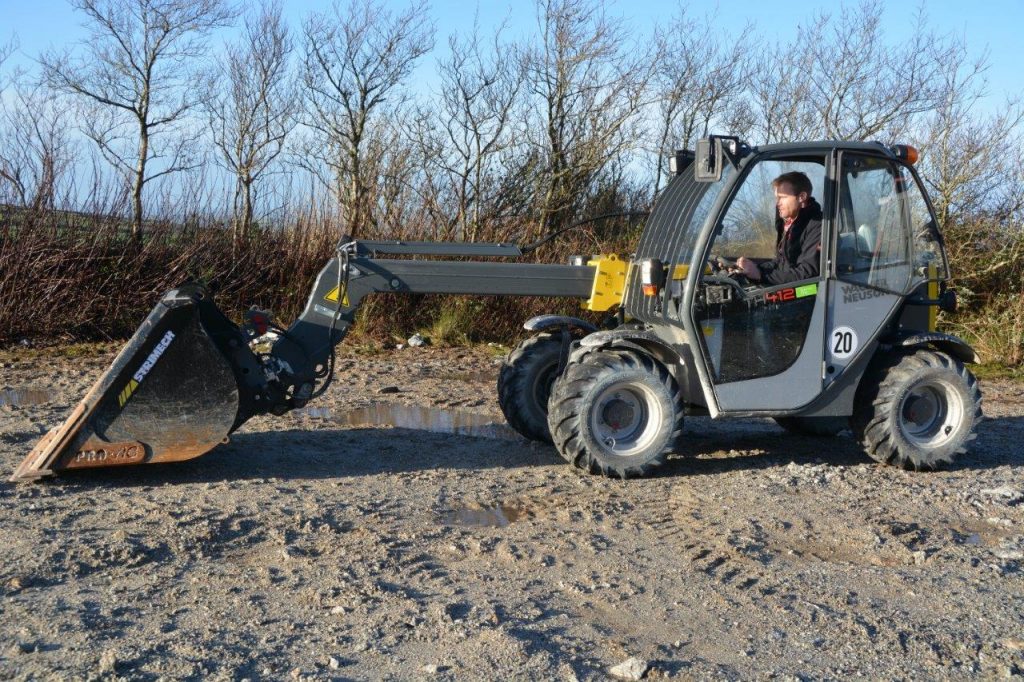 The company is at the forefront of explosives and explosive research and as part of a contract with the MOD, breakdown and dispose of old munitions including the decommissioning of larger old guns which require blowing up. As Managing Director Charlie Adcock explained an underground mine lends itself ideally to blowing up such material, as things can be exploded in a controlled environment without the risk of any flying debris escaping. In the same way the company is engaged in testing jet engines, which see’s them blowing off turbines using small amounts of explosives to test the outer casing against damage, again the mine is ideal for such activity and with all the development of new engines to meet emissions regulations this is a busy aspect of the business at the moment.
The company is at the forefront of explosives and explosive research and as part of a contract with the MOD, breakdown and dispose of old munitions including the decommissioning of larger old guns which require blowing up. As Managing Director Charlie Adcock explained an underground mine lends itself ideally to blowing up such material, as things can be exploded in a controlled environment without the risk of any flying debris escaping. In the same way the company is engaged in testing jet engines, which see’s them blowing off turbines using small amounts of explosives to test the outer casing against damage, again the mine is ideal for such activity and with all the development of new engines to meet emissions regulations this is a busy aspect of the business at the moment.
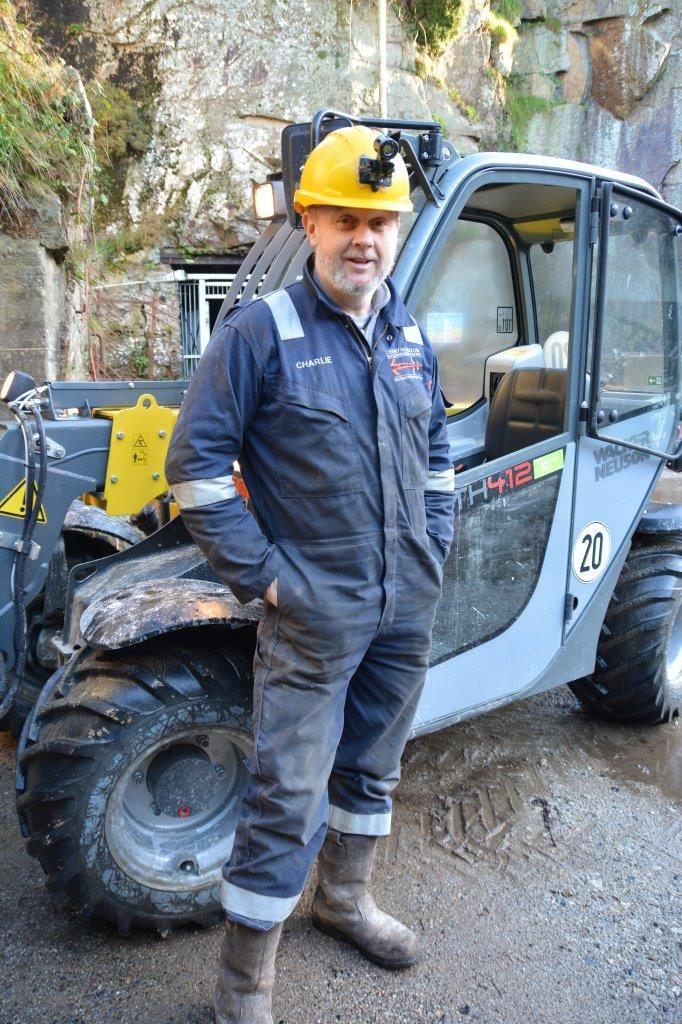 To facilitate good ventilation down in the mine a number of shafts need to be connected up this is time consuming and hard work and at the moment for the size of tunnel being bored, for every 1.8 metres of blasting, it creates around 45 tonnes of granite rock, all of which has to be taken out of the mine, loaded onto dumpers which was the reason the company invested in the new Wacker Neuson telehandler.
Charlie and the Mine Captain Gus Williams identified a large chamber amongst the labyrinth of tunnels, which has a concrete floor and will be ideal for most of the major testing work, but at the moment its down a dead-end tunnel hence the reason for the continued mining to improve ventilation, as Charlie explained in its present state you can test down there, but you cannot return for 24 hours due to the smoke created by the explosion.
Charlie Adcock told us more about the decision to by the Wacker Neuson, “We initially looked into specialist low profile LHD (Load, Haul, Dump) mining kit but figured that we are not technically mining for commercial production, so we looked at something that would offer us a compromise. We had used other compact telehandlers previously on various jobs, in fact we had used a Wacker Neuson once before when we were working in Namibia doing special effects work during filming of The Mummy, we were very impressed with it”.
To facilitate good ventilation down in the mine a number of shafts need to be connected up this is time consuming and hard work and at the moment for the size of tunnel being bored, for every 1.8 metres of blasting, it creates around 45 tonnes of granite rock, all of which has to be taken out of the mine, loaded onto dumpers which was the reason the company invested in the new Wacker Neuson telehandler.
Charlie and the Mine Captain Gus Williams identified a large chamber amongst the labyrinth of tunnels, which has a concrete floor and will be ideal for most of the major testing work, but at the moment its down a dead-end tunnel hence the reason for the continued mining to improve ventilation, as Charlie explained in its present state you can test down there, but you cannot return for 24 hours due to the smoke created by the explosion.
Charlie Adcock told us more about the decision to by the Wacker Neuson, “We initially looked into specialist low profile LHD (Load, Haul, Dump) mining kit but figured that we are not technically mining for commercial production, so we looked at something that would offer us a compromise. We had used other compact telehandlers previously on various jobs, in fact we had used a Wacker Neuson once before when we were working in Namibia doing special effects work during filming of The Mummy, we were very impressed with it”.
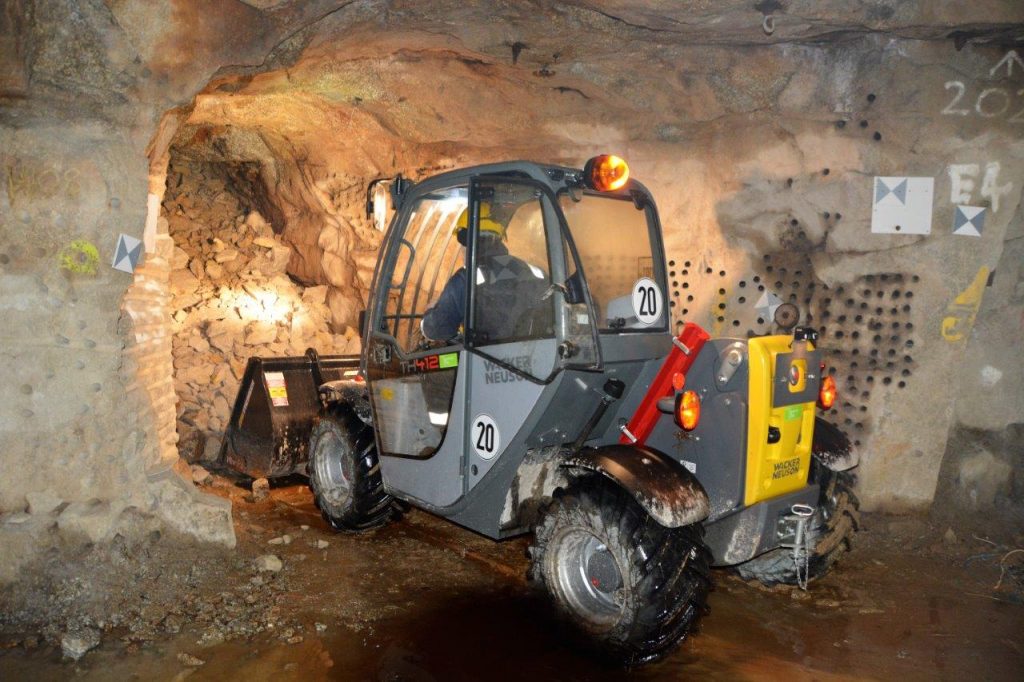 Charlie continued, “We looked at other makes before making a decision, Genie, Manitou and Bobcat were all in the frame, but the Wacker Neuson appealed most due to its low build height, which as you will see is essential in the tighter confines of the mine. In the end we selected it based on its compact dimensions and the competitive price offered to us by our local dealer Equipment One”.
The machines primary role will be to dig and load the granite rock down in the mine, with supporting duties being tidying up the tip area, loading and carrying additional tools and equipment and loading and unloading delivery lorries using its pallet fork carriage attachment.
Charlie continued, “We looked at other makes before making a decision, Genie, Manitou and Bobcat were all in the frame, but the Wacker Neuson appealed most due to its low build height, which as you will see is essential in the tighter confines of the mine. In the end we selected it based on its compact dimensions and the competitive price offered to us by our local dealer Equipment One”.
The machines primary role will be to dig and load the granite rock down in the mine, with supporting duties being tidying up the tip area, loading and carrying additional tools and equipment and loading and unloading delivery lorries using its pallet fork carriage attachment.
 Charlie said, “This machine offers us a lot of flexibility compared to other machines, with the option to use a range of attachments that could be added as and when we need them in the future, we already have the forks and a man riding cage for it and I’m sure we will add more. It’s hard going down there I won’t deny that and this machine is not perfect for the task in hand but it’s a great compromise for us and we have been so impressed with it, we have in fact ordered its larger brother the TH522 for our Cheddar facility”.
Charlie said, “This machine offers us a lot of flexibility compared to other machines, with the option to use a range of attachments that could be added as and when we need them in the future, we already have the forks and a man riding cage for it and I’m sure we will add more. It’s hard going down there I won’t deny that and this machine is not perfect for the task in hand but it’s a great compromise for us and we have been so impressed with it, we have in fact ordered its larger brother the TH522 for our Cheddar facility”.
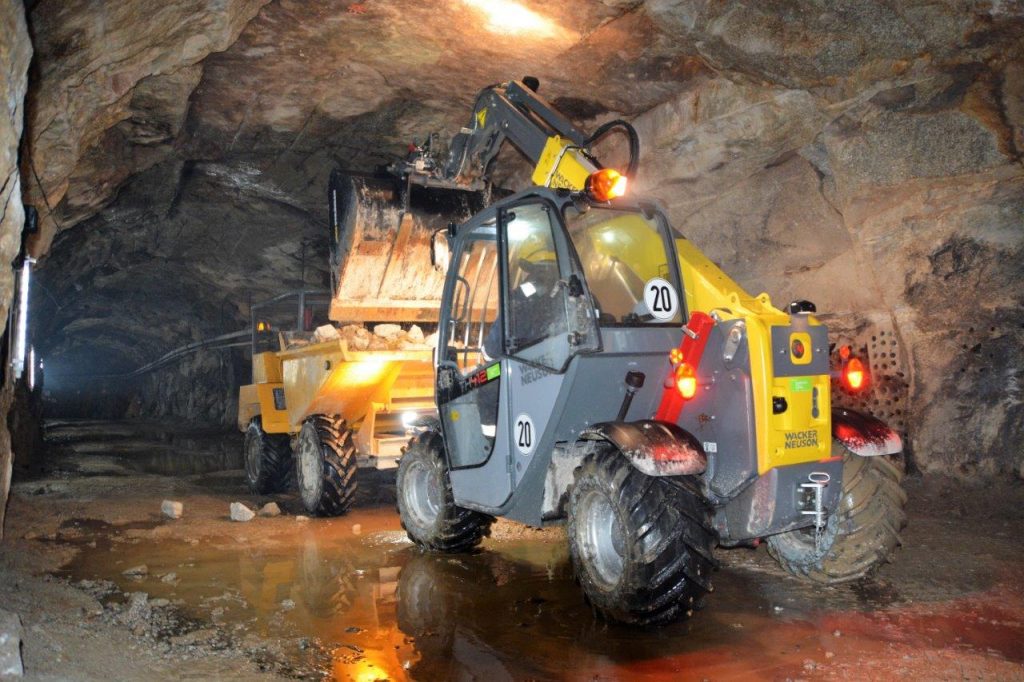 Equipment One’s Ben Dommett was keen to show us around the features of the well-engineered TH412. Popping the bonnet on the offside the whole thing tilts outwards, checking the fluid levels is best done from the rear end of the machine due to the bonnets position when opened, for any major work I’m sure it could be easily removed if needed. The engine in question is a Stage 3A Yanmar which produces 31.0hp (22.6kw) @3,000rpm and housed under the bonnet are the fluid and air filters.
Equipment One’s Ben Dommett was keen to show us around the features of the well-engineered TH412. Popping the bonnet on the offside the whole thing tilts outwards, checking the fluid levels is best done from the rear end of the machine due to the bonnets position when opened, for any major work I’m sure it could be easily removed if needed. The engine in question is a Stage 3A Yanmar which produces 31.0hp (22.6kw) @3,000rpm and housed under the bonnet are the fluid and air filters.
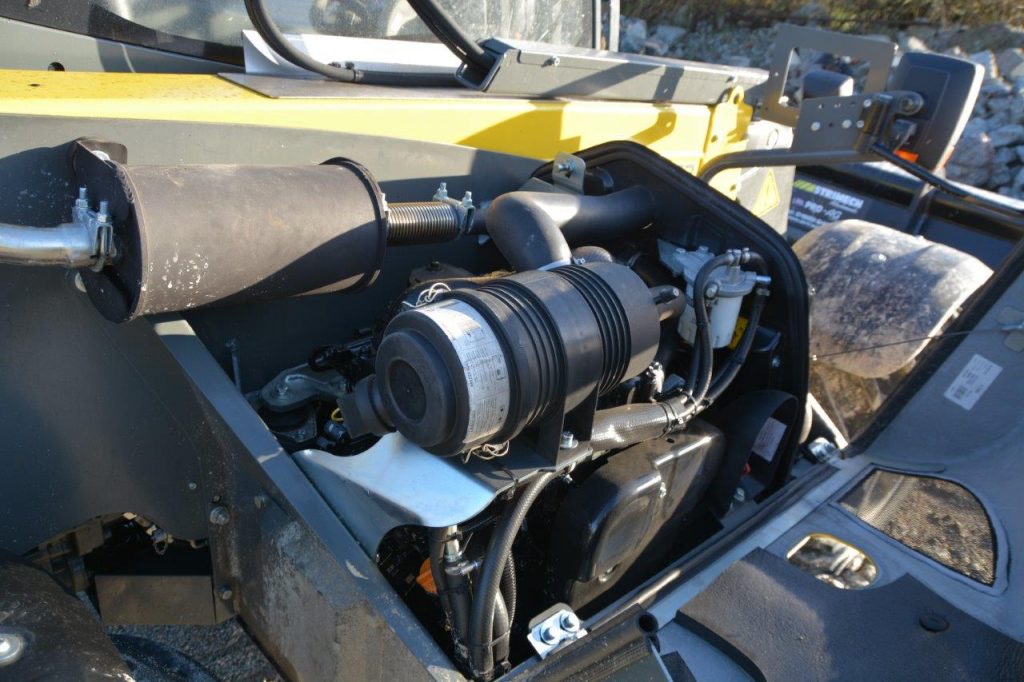 The ROPS/FOPS cab is typical Wacker Neuson, Bavarian in design, minimalist in terms of controls but extremely practical, the top half glass stable door is especially useful down in the mine, with the cab heater on and the main door shut the operator can still keep in contact with ground crew and improved glare free visibility to the near side.
The seat is a PVC covered design, ideal for this damp environment and features air cushioning and seat belt for improved comfort and safety. On the operator’s right-hand side, we find the multi-function joystick, this features this controls the raising and lowering of the boom, tilting of the attachment, and via a switch on top of the lever the direction of travel. A host of rocker switches control such functions as windscreen wiper/wash, heater fan, hazard lights and working lights of which there are two at the front and one on the rear of the cab, fuel level gauge, hour meter and warning light display completes the dash layout.
The ROPS/FOPS cab is typical Wacker Neuson, Bavarian in design, minimalist in terms of controls but extremely practical, the top half glass stable door is especially useful down in the mine, with the cab heater on and the main door shut the operator can still keep in contact with ground crew and improved glare free visibility to the near side.
The seat is a PVC covered design, ideal for this damp environment and features air cushioning and seat belt for improved comfort and safety. On the operator’s right-hand side, we find the multi-function joystick, this features this controls the raising and lowering of the boom, tilting of the attachment, and via a switch on top of the lever the direction of travel. A host of rocker switches control such functions as windscreen wiper/wash, heater fan, hazard lights and working lights of which there are two at the front and one on the rear of the cab, fuel level gauge, hour meter and warning light display completes the dash layout.
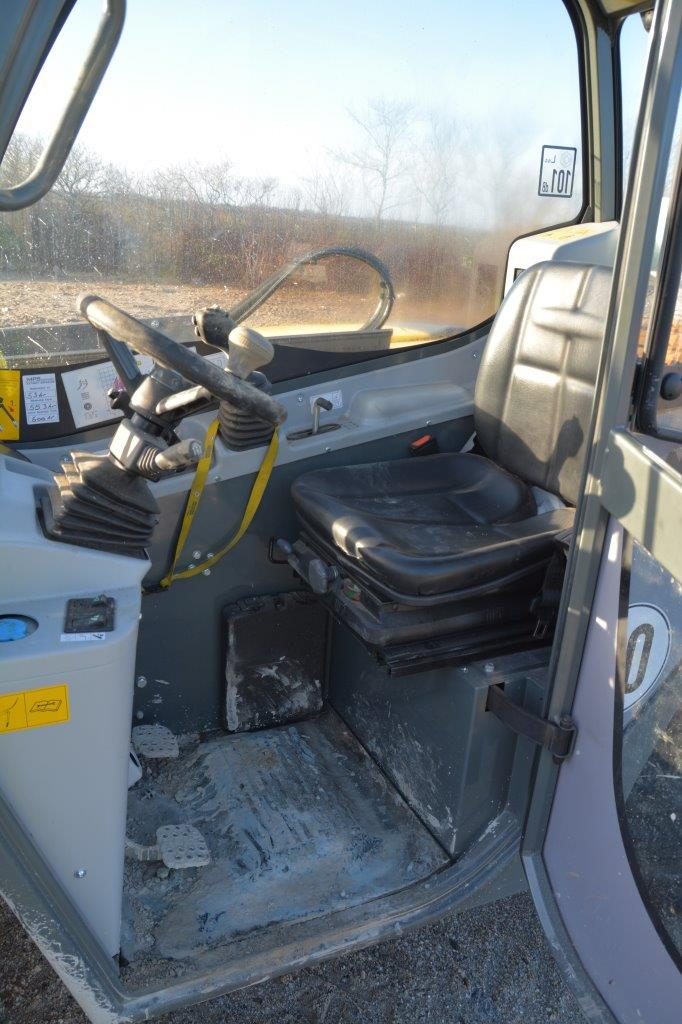 On the floor there are just two pedals, on the right-hand side is the accelerator and on the left, is the brake, and the handbrake which is applied to all four wheels when engaged, is also located up on the right-hand console in front of the joystick. Drive is fully hydrostatic and offers a top speed of 20kmh via two speed stages.
The hydraulic quick-change system comes as standard and in this instance to the tool of choice was a general-purpose Pro - AG loader bucket from Strimech which features reinforced corners and an additional bolt on cutting edge. The compact machine is capable of lifting its 1.2 tonne payload load to an impressive 4.5m. Wacker Neuson’s operator friendly VLS (Vertical Lift System) maintains that the load remains level and balanced throughout the lifting and lowering cycle.
On the floor there are just two pedals, on the right-hand side is the accelerator and on the left, is the brake, and the handbrake which is applied to all four wheels when engaged, is also located up on the right-hand console in front of the joystick. Drive is fully hydrostatic and offers a top speed of 20kmh via two speed stages.
The hydraulic quick-change system comes as standard and in this instance to the tool of choice was a general-purpose Pro - AG loader bucket from Strimech which features reinforced corners and an additional bolt on cutting edge. The compact machine is capable of lifting its 1.2 tonne payload load to an impressive 4.5m. Wacker Neuson’s operator friendly VLS (Vertical Lift System) maintains that the load remains level and balanced throughout the lifting and lowering cycle.
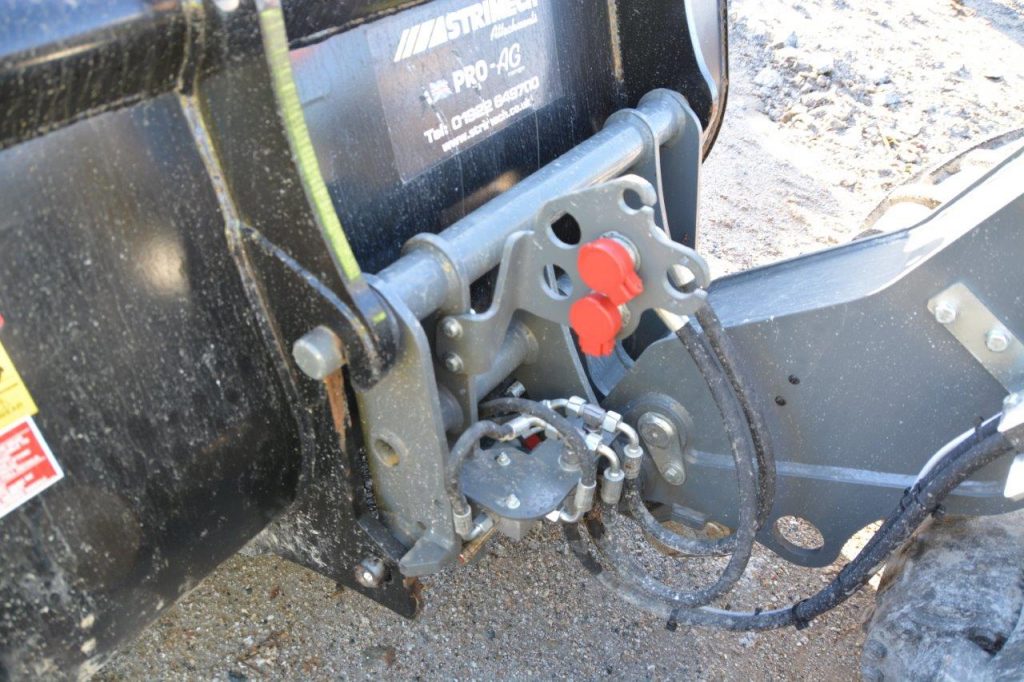 The four-wheel drive four-wheel steer machine sits on standard 10.0/75 - 15.3 AS ET-40 floatation tyres in this instance supplied by MITAS, large plastic mudguard’s help to reduce mud being thrown up onto the machine. The TH412 also offers an extremely small inside turning radius of just 821mm.
To the rear of the machine is a sturdy looking towing point in this application ideal for towing trailers, generators or air compressors into the mine if required. I was very impressed with the machine a looked forward to seeing it go about its duties underground.
But first I was treated to a history lesson, incredibly Holman’s who used to own the mine, were founded as far back as 1801 by Mr John Holman and the company’s earliest rock drills were tested in this very mine in 1882. Compair Holman as the business later became known, at one time employed over 4,000 people in Cornwall and the company was one of the biggest manufacturers of air drills back in the day. The Holman Mine which is over 100 years old was never mined in terms of valuable mineral extraction, it’s sole purpose was as a testing and training facility for the company’s air drill products.
The four-wheel drive four-wheel steer machine sits on standard 10.0/75 - 15.3 AS ET-40 floatation tyres in this instance supplied by MITAS, large plastic mudguard’s help to reduce mud being thrown up onto the machine. The TH412 also offers an extremely small inside turning radius of just 821mm.
To the rear of the machine is a sturdy looking towing point in this application ideal for towing trailers, generators or air compressors into the mine if required. I was very impressed with the machine a looked forward to seeing it go about its duties underground.
But first I was treated to a history lesson, incredibly Holman’s who used to own the mine, were founded as far back as 1801 by Mr John Holman and the company’s earliest rock drills were tested in this very mine in 1882. Compair Holman as the business later became known, at one time employed over 4,000 people in Cornwall and the company was one of the biggest manufacturers of air drills back in the day. The Holman Mine which is over 100 years old was never mined in terms of valuable mineral extraction, it’s sole purpose was as a testing and training facility for the company’s air drill products.
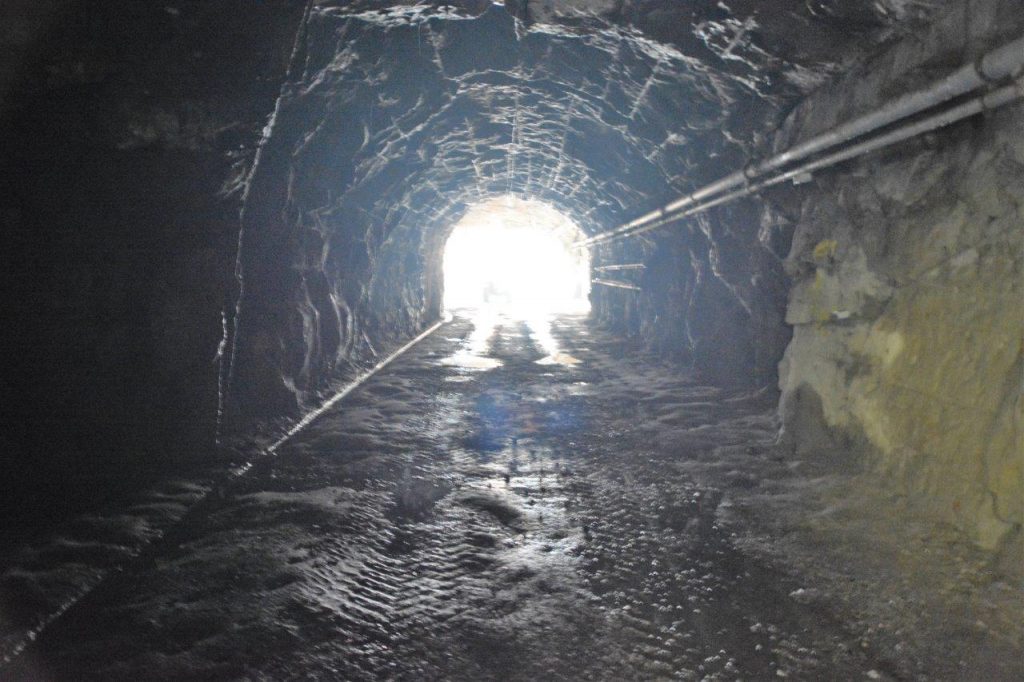 For many years the mine has been used by the highly respected Cambourne School of Mining who used it to train students to become mining professionals many of whom have gone on to use their skills in underground mines all over the world especially in places like South Africa and Australia. When Compair Holman ceased trading in the 1990’s the mine was no longer needed by them and it was then bought out by a holding company from up North and in later years it was leased to Exeter University who by that time had taken over the Cambourne School of Mining however training of students has since ceased.
For many years the mine has been used by the highly respected Cambourne School of Mining who used it to train students to become mining professionals many of whom have gone on to use their skills in underground mines all over the world especially in places like South Africa and Australia. When Compair Holman ceased trading in the 1990’s the mine was no longer needed by them and it was then bought out by a holding company from up North and in later years it was leased to Exeter University who by that time had taken over the Cambourne School of Mining however training of students has since ceased.
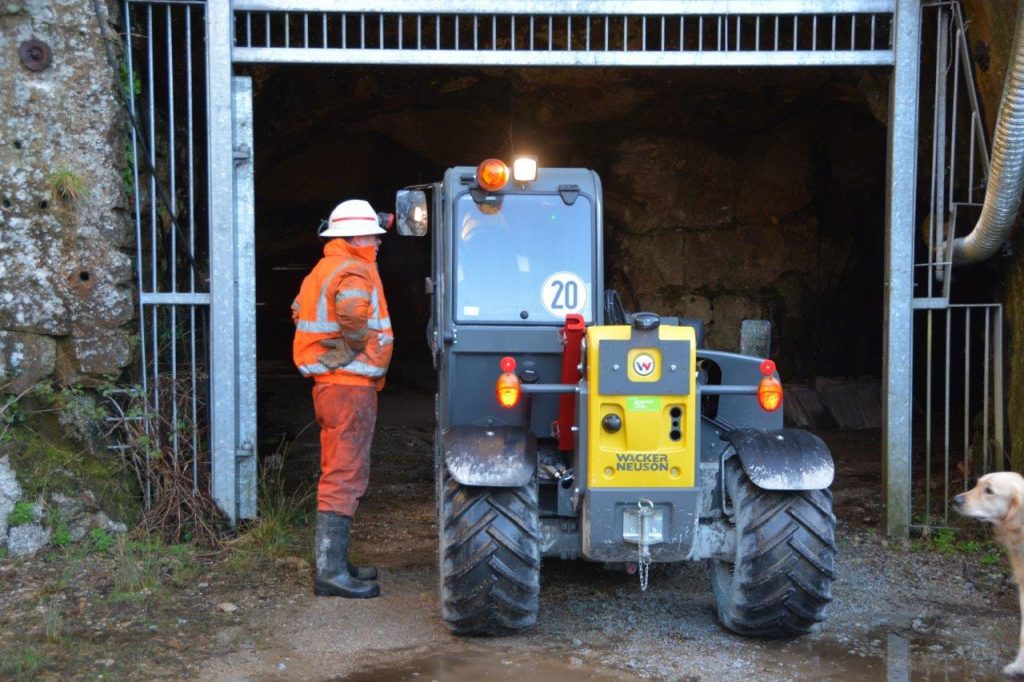 Incredibly Event Horizon put in a bid to purchase the mine and although not expecting too, won it! and are now the owners outright. As a business they are now also working to bring students back in again which can only be a good thing for the local community and the future of traditional mining.
Through their acquisition of the mine Event Horizon have inherited the invaluable skills of long term Cornish mining men Gus Williams who as mentioned previously is the Mine Captain and Mark Casmarrick to has worked in the mines all his life, in fact we caught up with Mark and Gus down at one of the mine faces where Mark was drilling in the traditional way to prepare for the blasting charges.
At every turn in the mine there was interesting evidence of its history, including a couple of track mounted Eimco LHD (Load, Haul, dump,) mining machines which are still operational and up on the upper deck an area of mine designed to replicate a South African gold mine.
Incredibly Event Horizon put in a bid to purchase the mine and although not expecting too, won it! and are now the owners outright. As a business they are now also working to bring students back in again which can only be a good thing for the local community and the future of traditional mining.
Through their acquisition of the mine Event Horizon have inherited the invaluable skills of long term Cornish mining men Gus Williams who as mentioned previously is the Mine Captain and Mark Casmarrick to has worked in the mines all his life, in fact we caught up with Mark and Gus down at one of the mine faces where Mark was drilling in the traditional way to prepare for the blasting charges.
At every turn in the mine there was interesting evidence of its history, including a couple of track mounted Eimco LHD (Load, Haul, dump,) mining machines which are still operational and up on the upper deck an area of mine designed to replicate a South African gold mine.
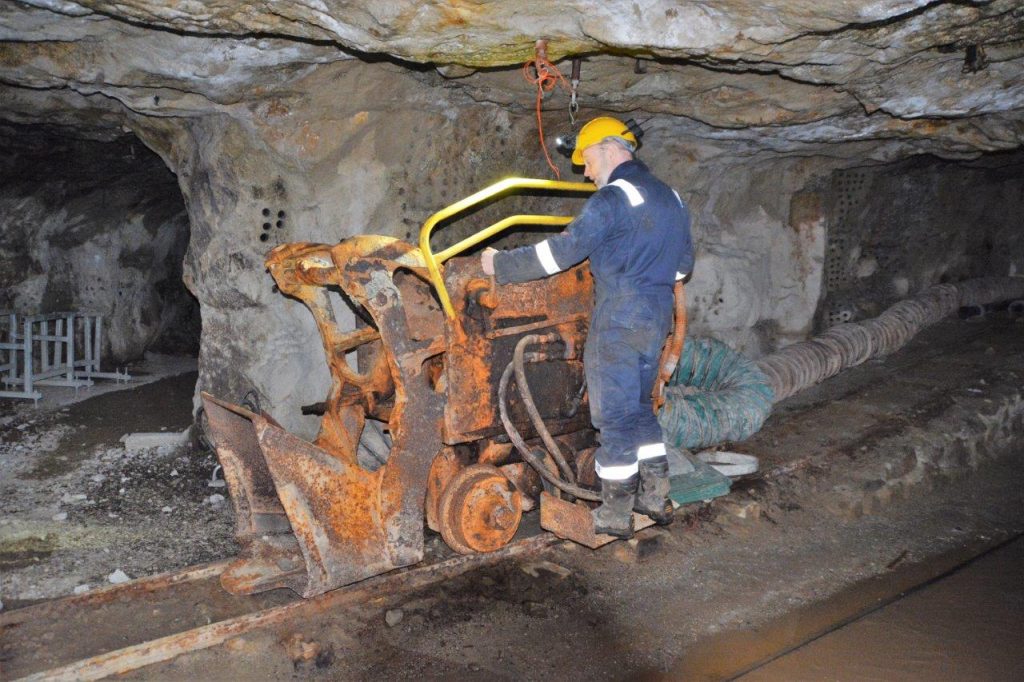 According to Charlie these “old school” miners were sceptical of the ability of the TH412 telehandler to cope with the extraction and loading of the blasted granite, but both have been won around and are now full of praise for the compact machine. We witnessed the TH412 digging out a blasted area for a turning bay and loading a vintage 1987 Sanderson/Winget dumper which had been converted with a lower ROP’s cage.
According to Charlie these “old school” miners were sceptical of the ability of the TH412 telehandler to cope with the extraction and loading of the blasted granite, but both have been won around and are now full of praise for the compact machine. We witnessed the TH412 digging out a blasted area for a turning bay and loading a vintage 1987 Sanderson/Winget dumper which had been converted with a lower ROP’s cage.
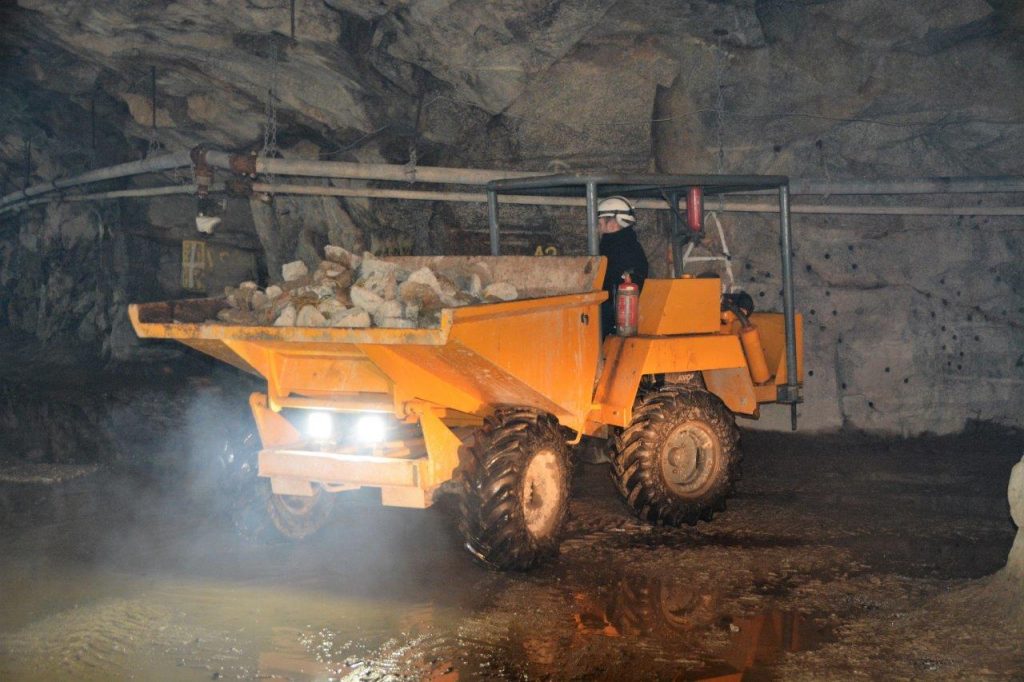 Charlie expects to face problems later on when there is not so much overhead space to discharge the load from the conventional bucket, but they are already forward thinking and designing a bucket with a bottom opening to alleviate the problem. There is no denying this is a tough application for the Austrian built telehandler, but from what we saw it coped admirably.
Charlie expects to face problems later on when there is not so much overhead space to discharge the load from the conventional bucket, but they are already forward thinking and designing a bucket with a bottom opening to alleviate the problem. There is no denying this is a tough application for the Austrian built telehandler, but from what we saw it coped admirably.